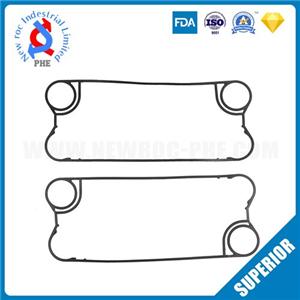How is the cleaning of the plate heat exchanger performed
Through a recent return visit to the market, we found that many customers are not very familiar with the cleaning problems that are prone to plate heat exchangers, and do not know how to deal with them, so they have consulted us many times. Today, I will share the information about plate heat exchangers with you, hoping to attract everyone's attention and let everyone have a deep understanding of plate heat exchangers. In this way, everyone can know well when using plate heat exchangers, and I hope to inspire and help everyone. It is strictly forbidden to use hydrochloric acid to clean the plate heat exchanger. The plate heat exchanger should be regularly inspected and repaired. The thermal efficiency is significantly reduced, and the pressure drop should be cleaned when the pressure drop changes significantly. The cleaning can be done by opening the equipment and flushing the heat exchanger plates one by one, resulting in fouling In serious cases, the heat exchanger plates should be removed and cleaned. If chemical cleaning agents are used, they can be circulated inside the equipment. If mechanical cleaning is required, soft brushes should be used. Steel brushes are forbidden to avoid scratching the plates; After the equipment is rinsed, it must be wiped dry with a clean cloth. There should be no foreign particles and fibers between the heat exchanger plates and the heat exchanger rubber pads; during the cleaning process, for the rubber pads and degummed pads to be replaced It should be adhered firmly, and carefully check whether it is uniform before assembling, and wipe off the excess adhesive.
What are the replacement steps for plate heat exchanger seals?
1. Inspection and testing of reuse performance. In the case of suspected corrosion, check the wall thickness of the heat exchanger and pipes.
2. Remove the aging heat exchanger seals on the plate heat exchanger. According to different dirt, chemical cleaning is carried out by acid-alkali cleaning tank, and the surface of the cleaned parts will not be corroded by chemical media (such as gasoline).
3. After the plate heat exchanger is chemically cleaned. Use a high-pressure blowing device to thoroughly remove the chemical media remaining on the surface of the plate heat exchanger plates and other surfaces
4. Each heat exchanger plate is coated with a fluorescent test agent. Under the irradiation of ultraviolet light, check whether there are small cracks and corrosion holes, and clean it again. In addition, it is important to check the sealing groove of the heat exchanger plates, and trim them if necessary.
5. For the adhesive heat exchanger gasket, the residual material will be completely removed, and the mixed adhesive glue will be used to re-bond, and the reassembled heat exchanger plate group will be clamped in a special fixture to solidify the adhesive ; Heat insulation in a holding furnace to achieve the best bonding effect. For non-bonded heat exchanger gaskets, different devices are used to fix the heat exchanger gaskets in the heat exchanger plates.
6. Inspect the bonding position and bonding quality of the plates of each heat exchanger, sort them according to the order of installation, and then carefully assemble the heat exchanger plate groups.




